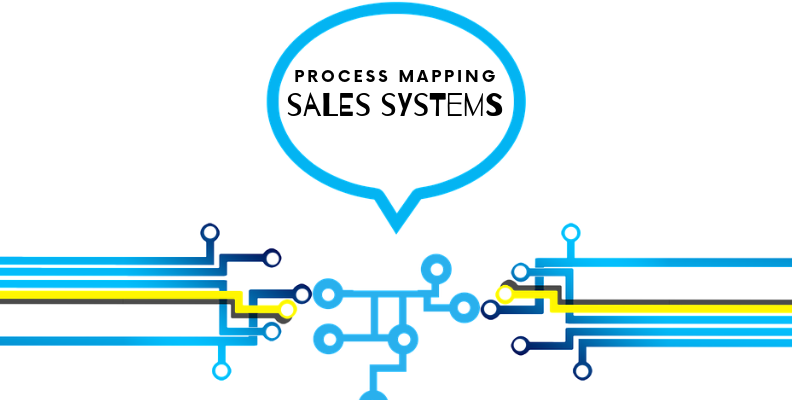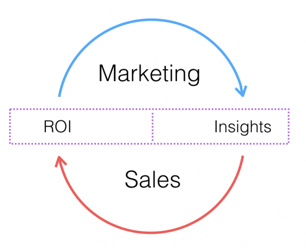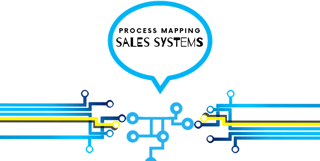 Customer Relationship Management (CRM) software is projected to continue to be the largest software market in the world reaching more than $80 billion in revenue by 2025. A lot of that revenue can be contributed toward large enterprise companies taking on big hitters like Salesforce and Oracle, but even small to mid-sized companies acknowledge the value of investing in a CRM that can scale to size, and particularly in a solution that is cloud-based and mobile accessible. Despite tremendous growth and value, CRM's are notoriously a pain in the neck if not implemented correctly. So, if throwing your hat into the $80 billion ring, you may want to take a step back and ensure your sales system build within your CRM has a foundational sales enablement strategy in place in order to reap some of that satisfying ROI.
Customer Relationship Management (CRM) software is projected to continue to be the largest software market in the world reaching more than $80 billion in revenue by 2025. A lot of that revenue can be contributed toward large enterprise companies taking on big hitters like Salesforce and Oracle, but even small to mid-sized companies acknowledge the value of investing in a CRM that can scale to size, and particularly in a solution that is cloud-based and mobile accessible. Despite tremendous growth and value, CRM's are notoriously a pain in the neck if not implemented correctly. So, if throwing your hat into the $80 billion ring, you may want to take a step back and ensure your sales system build within your CRM has a foundational sales enablement strategy in place in order to reap some of that satisfying ROI.
Once you decide on a CRM that is the right fit for your company, it is best practice to set your foundation by creating a process map which will provide you with a bird's eye view of your build plan, similar to a blueprint. As your system does scale up and become more complex, your map will act as a baseline reference piece which will help you prevent crossing any wires. Here at Revenue River, we refer to these process maps as "sales system architecture maps". To account for boundless alterations as strategy changes, we invested in the diagram software tool LucidChart. After all, an effective sales system should be evergreen, meaning your map should be malleable as it evolves overtime. To get the most out of your architecture map, you will want to focus on the following: a timeline of progression, attribution data points influenced by both sales and marketing, and scalability. The end result will be a closed-loop system that that will continue to accrue more and more capabilities and insight as your company grows.
Timeline of Progression
If a sales system within a CRM were a language, it wouldn't read linearly from left to right which is why it can be so hard for us to wrap our minds around its complexity. That being said, to be able to visually comprehend a sales system architecture map, it's best practice to have some sort of measurement of progression, which may be more abstract than time. In the case of a sales system, I'd recommend your timeline be the buyer's journey. The starting point of this spectrum would be overall unawareness of your service or product, with an end point of decision making, ideally when a customer renews and refers your product or service to others. This timeline will also help you keep your sales system customer-centric. Every process build you implement should have you asking, what is its purpose, and how will it influence the buyer’s journey as well as your goals?
Attribution Points
According to Demand Gen Report, 47% of buyers view 3-5 pieces of content before engaging with a sales rep. It's safe to say there are a ton of influencing touch points before a contact becomes a lead. Understanding what each of those micro-engagements throughout the buyer's journey are in relation to very clearly defined lead statuses allows for an accountability mechanism for lead attribution.
Think of your sales system as more of a revenue system. Begin by mapping out the channels that any lead may enter your CRM from. Lead source is a key attribution point that will give you insight into the effectiveness and alignment of your inbound marketing strategy and sales prospecting. From there, map every sales process, both manual and automated within your CRM, that will move a lead along through your sales funnel.
Here's where it gets interesting and where you might begin to see some holes in your strategy. You will want to add on a second layer to your map which includes any marketing attribution points. Is there an email nurturing campaign your MQL's will enter into? Map it. Do you have a case study campaign targeting SQL's in your database? Map it. Any marketing strategy that may act as an conversion influencer, whether it be video, chatbot, email, you name it, will give you a much more in-depth understanding of your sales and marketing profitability and ROI if you can properly track it within your CRM. Ultimately, you should be mapping where marketing campaigns interact with your sales system and work in tandem with sales initiatives which will provide key metrics that can measure influence and conversion.

Scalability
Starting out, avoid getting too caught in the weeds with any complex integrations or elaborate systematic detail. Keep your initial sales enablement strategy simple with a minimally viable and scalable solution. Before you can grow, your system must be sound. Once you strip down each step in the process, ask yourself the following to see if the below is all accounted for:
- Customer-centric – mentioned above, does your map mirror the buyer’s journey?
- Clearly defined – what defines an MQL, SQL, etc? Where does the handoff between marketing and sales take place?
- Goal-oriented – Do you have measurable goals for both sales and marketing?
- Measurable – Can you measure toward your goals, and what milestones or touch points are you most interested in measuring?
Once you implement your system and begin to collect data in your CRM, you should begin to focus on your system reflecting the following:

- Repeatable - What is working? Will repeat clients continue to be nurtured?
- Predictable – Do you have have data points in place to provide analytics throughout the buyer's journey?
- Adaptable – Adoption is always a struggle. Your system must prove it’s worth by providing value but also must allow for accountability. Remember that your system is only as good as the people who use it.
Once you have your foundation set and see that your fundamental system is working seamlessly, you can begin to grow. Continue to add any integrationonto your map that may impact your sales and marketing process. As your system becomes more and more complex, remember to perform routine integration audits. Often times we accumulate a hefty tech stack and lose track of its performance and overall purpose. Sometimes, the tech has evolved and has more functionality than we are implementing; other times, it’s just extra noise in the system.
 Closed-loop System
Closed-loop System
In order to engage potential customers across multiple devices in multiple channels, you need data. You can close the loop by analyzing which marketing channels contribute the most sales qualified leads and sales opportunities. This is accomplished through automation within your CRM that tracks every lead's progression through attribution points. To do this, you need an organized and well thought out strategy that you can visualize. By layering your attribution model onto your sales architecture map you can paint a full picture of how sales and marketing align so you can consistently measure the results and ROI for the channels within your specific customer journey.


